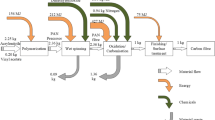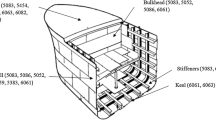Abstract
The aim of this paper is to show that historical technical archives and complementary physico-chemical studies can be combined to obtain relevant information on the materials and processes used in the manufacturing of a Breguet 765 Sahara airplane. This will be useful both in history of sciences and technology and in the renovation of this more than fifty years old airplane.
The Breguet 765 Sahara plane is the last version of a family of French double-deck transport aircraft produced by Breguet between 1948 and 1960. The gathering of multi-disciplinary information from the literature of the period of production with laboratory investigations has revealed that a “new” aluminum-copper-magnesium alloy was used in the rivets of the Breguet 765. The A-U3G alloy was developed to meet properties requirements of the aeronautical industry for joining sheets of aluminum and was used in the Breguet 765 Sahara to strengthen the joints. Analytical techniques included TEM, EPMA microprobe and metallography.
Similar content being viewed by others
References
Dollfus C, Les divers domaines d’applications : L ‘Aviation, Revue de l’Aluminium, 211 (1954) pp.201–209.
Breguet, E., Breguet, un siecle d’aviation édition Privat, pp. 91–97, (coll. Aviation, Toulouse, 2012).
Hartmann, D., Sauver Brigitte ou le sauvetage et la recuperation du Breguet 765 « SAHARA » d’Évreux á Toulouse, pp.37–39, (http://www.calameo.com/subscriptions/57493).
Service Technique de l’ Aéronautique, Clauses techniques du Breguet 765, édition 2bis (1956).
Hardouin Duparc Olivier, Alfred Wilm et les débuts de Duralumin, Cahiers d’histoire de l’aluminium 64, (Institut pour l’Histoire de l’Aluminium, Paris, 2005) p.62.
Saulmer, A., Le durcissement structural des alliages aluminium-cuivre 4%, Revue de l’ Aluminium 217, pp.41 – 46(1955).
Dubost, B., Samtfort, P., Durcissement par precipitation des alliages d’aluminium, Dossier Techniques de l’mgemeur M240, pp.2–4 (1991).
Penel, P., Le rivetage- première et deuxième partie, Encyclopédie du travail de l’Aluminium fiche G81, pp.1125–1127 (1958).
Tournaire, M„ Renouard, M„ Alliages pour rivets de la famille du Duralumin, Revue de l’Aluminium 217 (1955).
American Society for Metals Handbook committee, Metals Handbook vol. 8: Metallography, Structures and Phase Diagrams. Edited by American Society for Metals, p. 124, (Metals Park, Ohio, 1973)
Author information
Authors and Affiliations
Rights and permissions
About this article
Cite this article
Cochard, A., Douin, J., Warot-Fonrose, B. et al. Benefits of the Complementary use of Archaeometry Investigations and Historical Research in the Study of Ancient Airplanes: the Breguet Sahara’s Rivets. MRS Online Proceedings Library 1656, 157–165 (2014). https://doi.org/10.1557/opl.2014.825
Published:
Issue Date:
DOI: https://doi.org/10.1557/opl.2014.825




